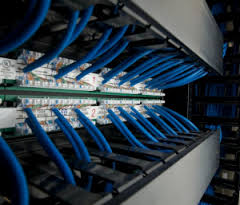5 Structured Cabling Tools That Are Essential
Organizations are fast learning the advantages offered by structured cabling for building a robust telecommunications infrastructure. This network infrastructure not only facilitates telephone service but at the same time is used to provide data transmission for the computer network.
Structured cabling system has become extremely popular among businesses and companies because it is not device dependent. One of the most common terms associated with structured cabling is NID or Network Interface Device (aka demarcation). NID defines the ownership because this is the point where the service provider terminates and structured cabling begins.
Structured cabling has several variations depending on the following:
- The shape of the building that houses the cabling system
- Function of the installed cabling system
- The cable along with its connection products
- The different types of equipments that structured cabling system will support for the present as well as future installations
- Retrofits and upgrades
- Client requirements
- Warranties provides by the Manufacturer
Every structured cabling service provider adheres to the industry standards while deploying and maintaining the installations. Standardization of the installations is required to ensure optimum performance for complex arrangements. It is ANSI or American National Standards Institute is the body responsible for deciding the standards as well as practices for the profession. Some of the obvious benefits of this standardization of installations include:
- Consistency during the design and installation phases
- Compliance with the transmission and physical line requirements
- Provides the base to examine any proposed expansion of system and any other changes
- Uniform documentation
Structured cabling usually include the entrance facilities, horizontal and vertical backbone pathways, horizontal and vertical backbone cables, horizontal cables, horizontal pathways, work area outlets, telecommunication closets, equipment rooms, cross-connect facilities, transition points, MUTOA or multi-user telecommunications outlet assemblies, and consolidation points.
The entrance facility usually includes all the cabling components required to connect the premises to the outside facilities. Typically it includes the cables, pathways, circuit protection devices, connecting hardware and also transition hardware. It houses the transition outside plant cabling to the approved cabling within the building construction, which is often the transition fire-rated cable. The entrance facility also serves as the demarcation.
Backbone cabling now takes over as the structured cabling is not rolled out to the other buildings and also from one floor to another within the building. Since the greater part of the network traffic is handled by these cables so it is referred as the backbone cabling.
5 structured cabling tools everyone in the industry should be using are:
- Cable Pathways: It typically is made up of shafts, conduits, raceways, and floor penetrations including sleeves or slots) for facilitating cable routing space.
- The Cables: Optical fiber, coaxial copper, twisted-pair copper, or other combinations.
- Connecting Hardware: Patch panels, connecting blocks, cross-connections, interconnections, or combination of other components
- Cabling Connectors: These are used to interface cables with equipment or two cables. Actually a connector provides a coupling mechanism to reduce losses and keep them at acceptable levels. Connectors used in optic fiber cables facilitate the transfer of light impulses from on to another.
- Other Support Facilities: This includes support hardware for cables, grounding and fire stopping hardware.






Leave a Reply
Want to join the discussion?Feel free to contribute!